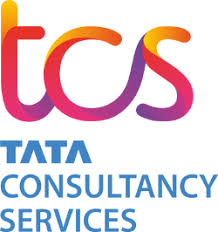Personalizing online education
%201%20(1).png)
Arivihan, an online learning platform in India, uses Meta’s Llama to generate personalized answers, as well as lectures, for students.
.png)
Answered over 100,000 queries and checked 6,000+ subjective answers with 82% accuracy.
46
AI use cases in
Education

%201%20(1).png)
Rising Academies integrated Claude-powered chatbots into mobile educational tools via WhatsApp to provide both a virtual math tutor (Rori) and a teacher support system (Tari). Rori delivers personalized math lessons through a mix of pre-written lesson plans and dynamic conversations, while Tari offers on-demand curriculum and lesson planning support for teachers. These solutions enhanced personalized learning and professional development in regions with limited access to traditional edtech.
%20(1).png)

%201%20(1).png)
Pensieve integrated Anthropic's Claude models (Claude 3.5 Sonnet and Claude 3.7 Sonnet) to build AI teaching assistants that automate grading and provide 24/7 personalized tutoring. The system clusters student submissions to calibrate grading rubrics and transforms static PDFs into interactive worksheets while enforcing instructor-controlled policies. This integration streamlines course management workflows and enhances real‐time classroom analytics.
%20(1).png)

%201%20(1).png)
Super Teacher integrated Anthropic's Claude to generate initial code for interactive educational tools and draft lesson plans for subjects ranging from pre-K to 5th grade. They embedded the AI into both software development and content creation workflows with mandatory human review to ensure safety and quality standards. This integration streamlined operational processes, enabling engineering and content teams to focus on higher-level development and creative enhancements.
%20(1).png)
321
companies using
Employee Agents

%201%20(1).png)
Cox Automotive integrated Claude via Amazon Bedrock into its portfolio by first creating a sandbox environment to evaluate performance metrics and then selecting Claude 3.5 Sonnet for complex tasks and Claude 3.5 Haiku for high-volume content generation. They automated personalized dealer-consumer communications, generated engaging vehicle listing descriptions, and produced SEO-optimized blog posts, while also streamlining internal data governance through automated metadata generation. This integration optimized operational efficiency across marketing and internal data processes.
%20(1).png)

%201%20(1).png)
Quillit integrated Anthropic’s Claude to automate qualitative research tasks by summarizing interview transcripts, generating contextual citations, and threading conversation data into comprehensive reports. They implemented the AI tool into their existing research workflow within three months, streamlining report writing, transcription, and analysis while ensuring data security and high precision.
%20(1).png)

%201%20(1).png)
TCS partnered with Google Cloud to integrate advanced AI and generative AI capabilities into retail service offerings. They launched the Google Cloud Gemini Experience Center at their Retail Innovation Lab in Chennai, enabling retail clients to ideate, prototype, and co-develop tailored AI solutions that optimize supply chain, warehouse receiving, customer insights, and content creation. This approach automated processes using tools like Vertex AI Vision for warehouse receiving and leveraged Vertex AI with Gemini 1.5 Pro and speech-to-text to transform service centers.
%20(1).png)
49
solutions powered by
Meta

%201%20(1).png)
Roboflow uses Meta's Segment Anything Model (SAM) to enable users to automatically segment objects in images and videos, significantly reducing the time required to create training datasets for computer vision models.
%20(1).png)

%201%20(1).png)
Untukmu.AI, an online gifting site in Indonesia, uses Meta's Llama 3.1 8B model with split inference processing to protect customer privacy. By running part of the AI model on customers' devices and the rest on their servers, they deliver personalized gift recommendations without accessing or storing personal data. This ensures customer privacy while still providing high-quality, tailored suggestions, enhancing trust and satisfaction.
%20(1).png)

%201%20(1).png)
CodeGPT, a popular coding assistant with over 1.4 million downloads, integrates Meta's Llama models to enhance developer productivity. By using Llama 3.2 (90B), CodeGPT helps developers not just generate code but also answer questions about their codebase, debug code, and onboard new team members. It includes a codebase graph mechanism that lets Llama understand entire repositories, allowing developers to effectively "talk" with their code. This integration leads to at least a 30% increase in productivity and accelerates onboarding from months to days.
%20(1).png)
78
AI use cases in
Asia

%201%20(1).png)
TCS partnered with Google Cloud to integrate advanced AI and generative AI capabilities into retail service offerings. They launched the Google Cloud Gemini Experience Center at their Retail Innovation Lab in Chennai, enabling retail clients to ideate, prototype, and co-develop tailored AI solutions that optimize supply chain, warehouse receiving, customer insights, and content creation. This approach automated processes using tools like Vertex AI Vision for warehouse receiving and leveraged Vertex AI with Gemini 1.5 Pro and speech-to-text to transform service centers.
%20(1).png)

%201%20(1).png)
LY Corporation leveraged OpenAI’s API to integrate advanced generative AI into its flagship services, including a GPT‑4o-powered LINE AI Assistant and GPT‑4 enhancements in Yahoo! JAPAN Search for summarizing reviews and generating travel plans. They also deployed SeekAI, an in-house productivity tool using RAG to rapidly retrieve information from internal documentation, streamlining employee inquiries and operations.
%20(1).png)

%201%20(1).png)
Physics Wallah developed 'Gyan Guru', a hyperpersonalized conversational study companion to address the unique academic and support needs of its 2 million daily users. The system was implemented by indexing over one million Q&As and ten million solved doubts in a vector database, then leveraging a Retrieval-Augmented Generation (RAG) approach integrated with Azure OpenAI to deliver individualized, context-aware responses. This integration streamlined various student interactions including academic queries, product-related issues, and general support, reducing reliance on human subject matter experts.
%20(1).png)
%201%20(1).png)
%202.png)

%202.png)
%201.png)
%201.png)
%20(1)%20(1).png)
.png)


.png)
.svg)


.png)


.png)








%201.png)